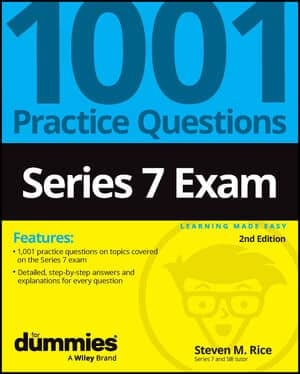Investors create a spread position by buying an option and selling an option on the same underlying security. The Series 7 will test your knowledge of these spread positions. The maximum gain or loss with a spread position is limited. Investors create spread positions to either limit their potential loss or to reduce the premium paid.
Call spread
An investor creates a call spread position when buying a call and selling a call on the same underlying security. Additionally, the strike prices and/or expiration months have to be different. Here’s what a call spread may look like:
Buy 1 JKL Aug 50 call at 9
Sell 1 JKL Aug 60 call at 2
The process for finding the maximum gain, maximum loss, and break-even point is the same for both call spreads and put spreads. If you put the premiums in the options chart, you will see that the investor has more money out than money in. Therefore, this investor created a debit (long) spread.
Put spread
An investor creates a put spread position when buying a put and selling a put on the same underlying stock with different expiration month and/or strike prices. Here’s an example of a put spread position:
Buy 1 MNO Sep 30 put at 1
Sell 1 MNO Sep 40 put at 8
When putting the premiums in the options chart, this investor will have more money in than money out, thereby creating a credit (short) spread. The options chart can make figuring out the particulars, such as the maximum gain, maximum loss, and break-even points easier. Here’s how you find these numbers, using the preceding put spread numbers:
Determine the maximum gain.
Begin by entering the premiums in the options chart. This investor bought the 30 put option for $100 (1 × 100 shares per option), so that $100 is Money Out of her pocket. Then this investor sold the 40 put for a premium of $800 (8 × 100 shares per option), which you enter in the Money In side of the chart because she received money for selling that option.
You end up with more Money In than Money Out; therefore, the investor’s maximum potential gain is $700 ($800 in minus $100 out).
To help you recognize a spread, notice that when you put the two premiums in the options chart, they are spread apart (one on either side).
Find the maximum loss.
You already calculated the maximum gain, so next you need to exercise both options to get the maximum loss. When exercising put options, enter the strike prices (multiplied by 100 shares) on the opposite side of the chart from their premiums because puts switch (go on the opposite side of the chart from the premium).
First, exercise the 30 put and enter $3,000 (30 × 100 shares per option) in the Money In side of the chart, which is opposite from the $100 premium. Next, exercise the 40 put and enter $4,000 in the Money Out side of the options chart, which is opposite its $800 premium. Total up the two sides, and you see that the maximum potential loss is $300.
Placing just the premiums in the options chart can give you the maximum potential gain or maximum potential loss but not both. To find the other answer, you must exercise both options.

